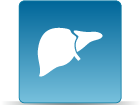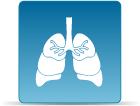1,2,3-Trichloropropane
CASRN 96-18-4 | DTXSID9021390
- Toxicological Review (PDF) (247 pp, 1.91 M)
- IRIS Summary (PDF) (33 pp, 283 K)
On this page:
Noncancer Assessment
Reference Dose for Oral Exposure (RfD) (PDF) (33 pp, 283 K) Last Updated: 09/30/2009
| System | RfD (mg/kg-day) | Basis | PoD | Composite UF | Confidence |
|---|---|---|---|---|---|
| Hepatic | 4 x 10 -3 | Increased absolute liver weight in male rats |
BMDL
(ADJ):
1.1
mg/kg-day |
300 | Medium/High |
Reference Concentration for Inhalation Exposure (RfC) (PDF) (33 pp, 283 K) Last Updated: 09/30/2009
| System | RfC (mg/m3) | Basis | PoD | Composite UF | Confidence |
|---|---|---|---|---|---|
| Respiratory | 3 x 10 -4 | peribronchial lymphoid hyperplasia in male rats |
BMCL
(HEC):
0.90
mg/m3 |
3000 | Low |
Cancer Assessment
Weight of Evidence for Cancer (PDF)
(33 pp, 283 K)
Last Updated: 09/30/2009
| WOE Characterization | Framework for WOE Characterization |
|---|---|
| Likely to be carcinogenic to humans | Guidelines for Carcinogen Risk Assessment (U.S. EPA, 2005) |
- Under the Guidelines for Carcinogenic Risk Assessment (U.S. EPA, 2005), 1,2,3-trichloropropane is "likely to be carcinogenic to humans", based on a statistically significant and dose-related increase in the formation of multiple tumors in both sexes of two species from an NTP (1993) chronic oral bioassay.
- This may be a synopsis of the full weight-of-evidence narrative.
Quantitative Estimate of Carcinogenic Risk from Oral Exposure (PDF) (33 pp, 283 K)
Oral Slope Factor:
5
x 10-1
per mg/kg-day
Extrapolation Method: Multistage-Weibull model with linear extrapolation from the point of departure (BMDL10), includes application of age-dependent adjustment factors (ADAFs).
Tumor site(s): Hepatic, Gastrointestinal, Ocular, Reproductive
Tumor type(s): alimentary system squamous cell neoplasms, liver hepatocellular adenomas or carcinomas, Harderian gland adenomas, uterine/cervix adenomas or carcinomas (NTP, 1993)
Note: EPA has concluded that 1,2,3-trichloropropan is carcinogenic by a mutagenic mode of action. Thus, based on the EPA cancer guidelines (2005), the oral slope factor (OSF) addressing lifetime exposure includes application of ADAFs. The OSF is recommended for lifetime exposures. EPA has also provided an adult-based cancer slope factor of 3 x 101 per mg/kg-day. This adult-based cancer slope factor can be used instead of the OSF when assessing cancer risk associated with exposure scenarios that don’t include early life (< 16 years of age) or when other calculations by the user are necessary (e.g., when applying ADAFs to age-specific exposure estimates).
Quantitative Estimate of Carcinogenic Risk from Inhalation Exposure (PDF) (33 pp, 283 K)
Not Assessed under the IRIS Program.
Chemical Documents
Other EPA Information
- Human Health Benchmarks for Pesticides (HHBP). This database provides human health benchmarks for pesticides that may be present in drinking water.
- Office of Pesticide Programs Pesticide Chemical Search. This database provides links to health effects information and registration status for pesticides.
- Chemistry Dashboard. This database provides information on chemical structures, experimental and predicted physicochemical, and toxicity data.
Critical Effects
Tumor Sites
Chemical Structure

Synonyms
- Allyl trichloride
- Glycerol trichlorohydrin
- Glyceryl trichlorohydrin
- NCI-C60220
- Propane, 1,2,3-trichloro-
- Trichlorohydrin
- Trichloropropane, 1,2,3-
- 1,2,3-Trichloropropane
- 96-18-4






